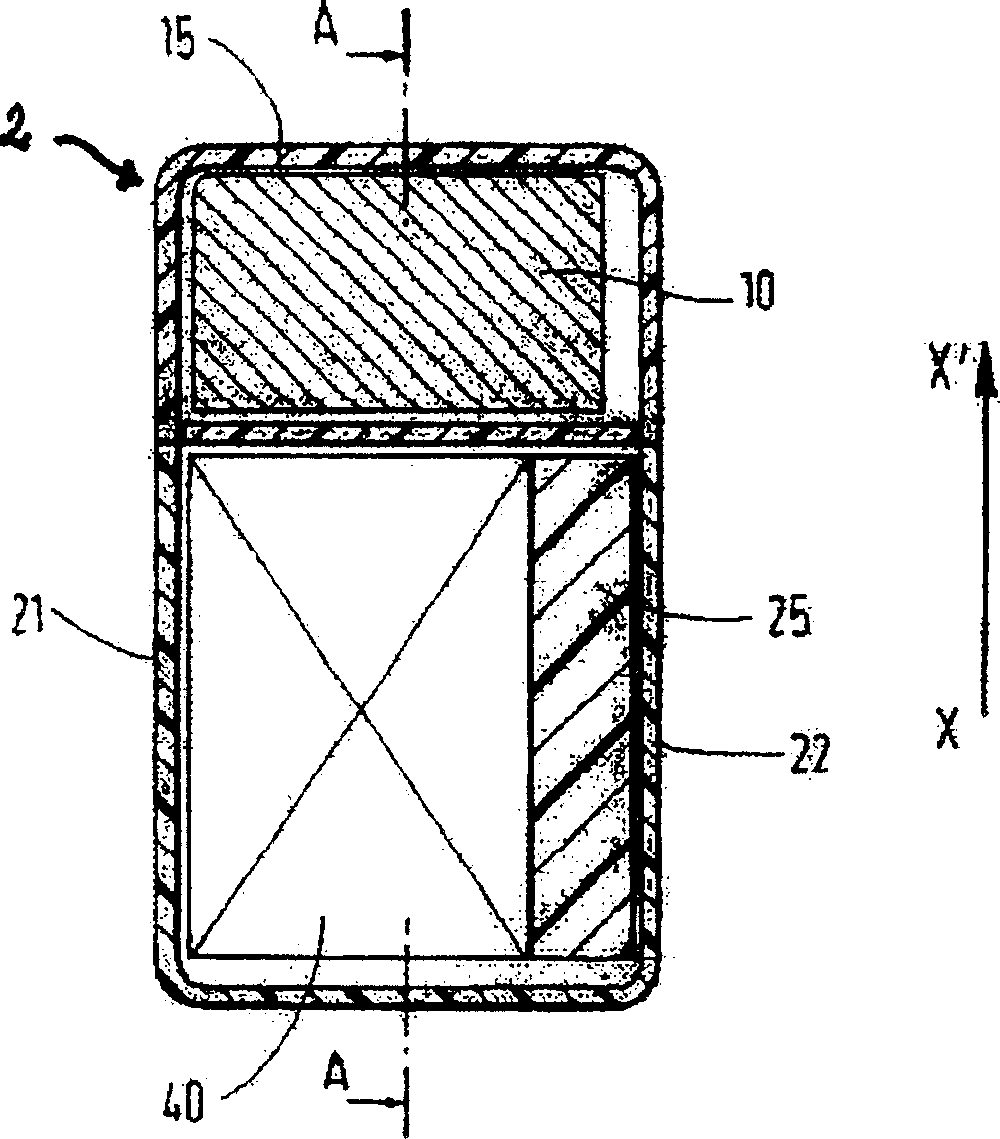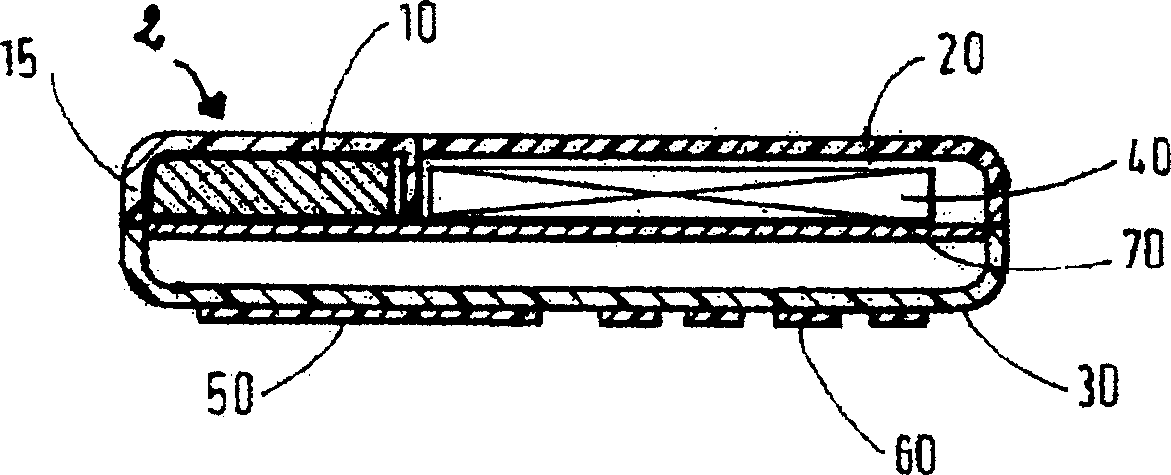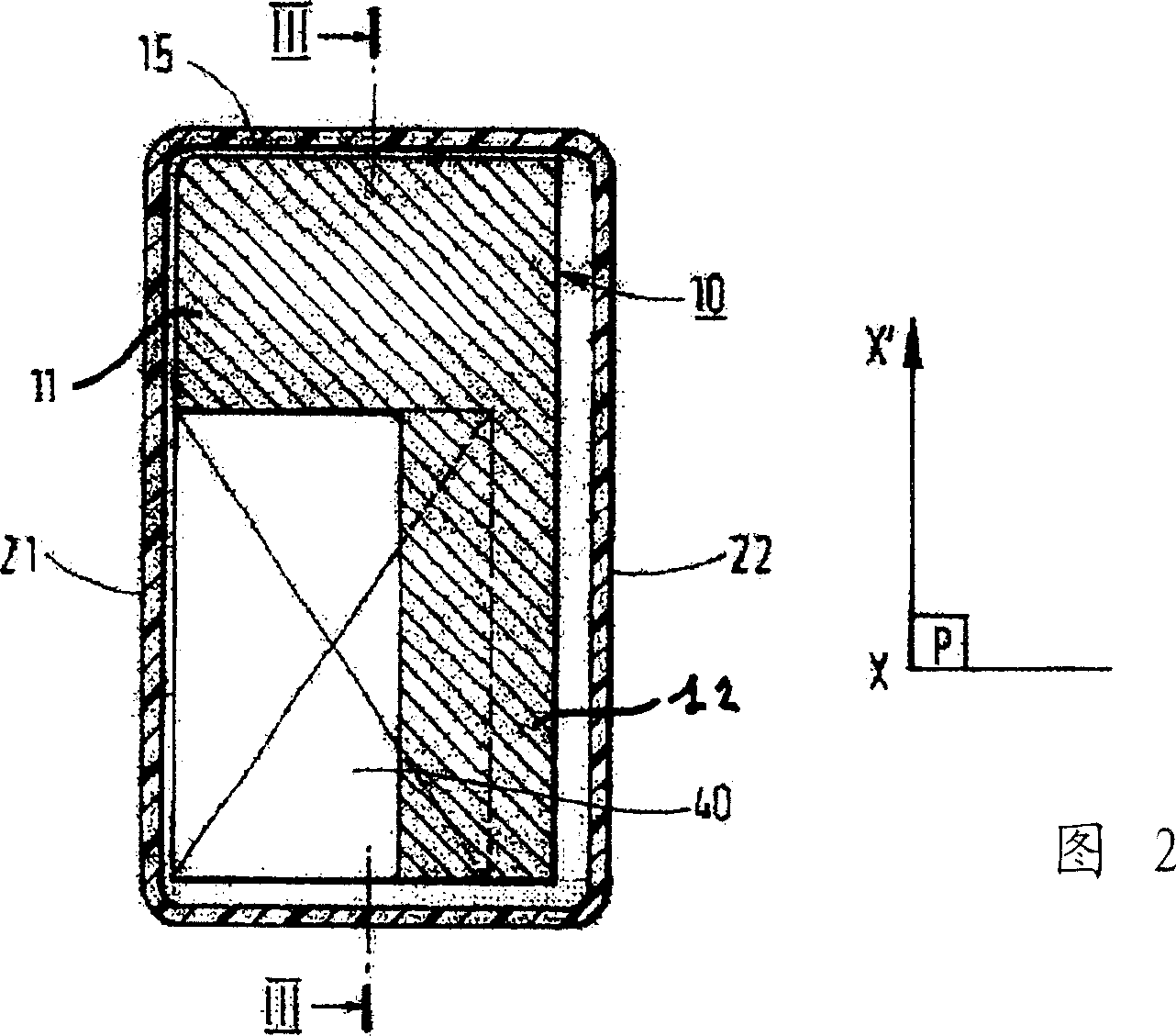Radio-communication terminal antenna
A radio communication and terminal technology, applied to antennas, antenna parts, antenna supports/mounting devices, etc., can solve problems such as reduced efficiency and damage to printed circuit boards 70
- Summary
- Abstract
- Description
- Claims
- Application Information
AI Technical Summary
Problems solved by technology
Method used
Image
Examples
Embodiment Construction
[0032] In the following description, the application of the invention to radio communication terminals including all forms of radio transceivers, such as mobile telephones, radio calling devices or personal digital assistants (PDAs), is illustrated.
[0033] The radio communication terminal according to the invention may be of the GSM850, GSM900, DCS (Digital Communication System), UMTS (Universal Mobile Telecommunications System) type or may be a DECT (Digital European Cordless Telecommunications) type telephone. This terminal can also integrate GPS (Global Positioning System) or Wi-Fi (Wireless Fidelity) functions.
[0034] The terminal of FIG. 2 is made of a housing with two side walls parallel to the axis X-X': a first wall 21 and a second wall 22 . In addition, there are two walls perpendicular to the axis X-X', which define the front shell 30 and the rear shell 20 of the terminal.
[0035] Under the rear case 20, the antenna 10 and the energy storage device 40 adjacent ...
PUM
 Login to View More
Login to View More Abstract
Description
Claims
Application Information
 Login to View More
Login to View More - R&D
- Intellectual Property
- Life Sciences
- Materials
- Tech Scout
- Unparalleled Data Quality
- Higher Quality Content
- 60% Fewer Hallucinations
Browse by: Latest US Patents, China's latest patents, Technical Efficacy Thesaurus, Application Domain, Technology Topic, Popular Technical Reports.
© 2025 PatSnap. All rights reserved.Legal|Privacy policy|Modern Slavery Act Transparency Statement|Sitemap|About US| Contact US: help@patsnap.com



